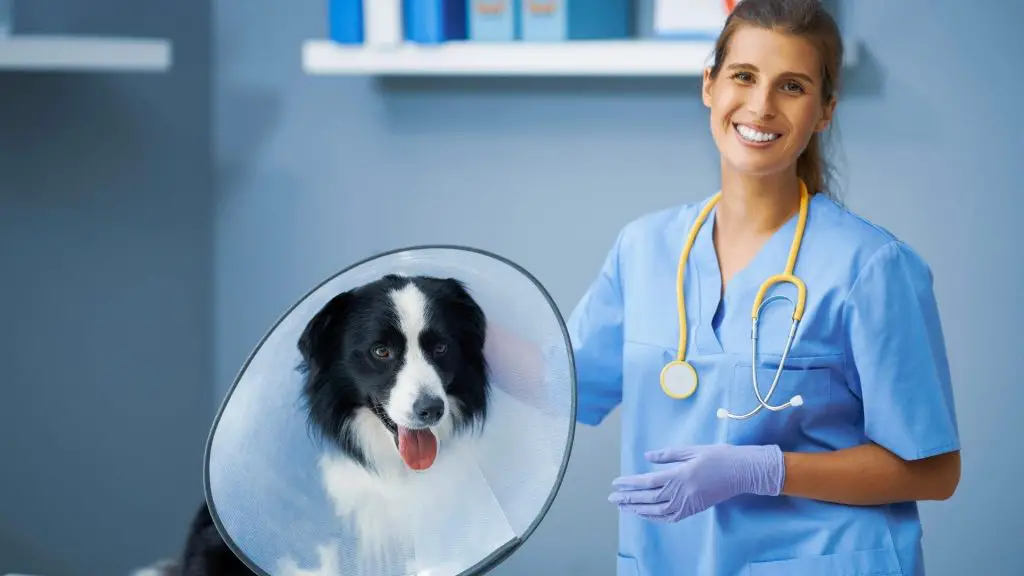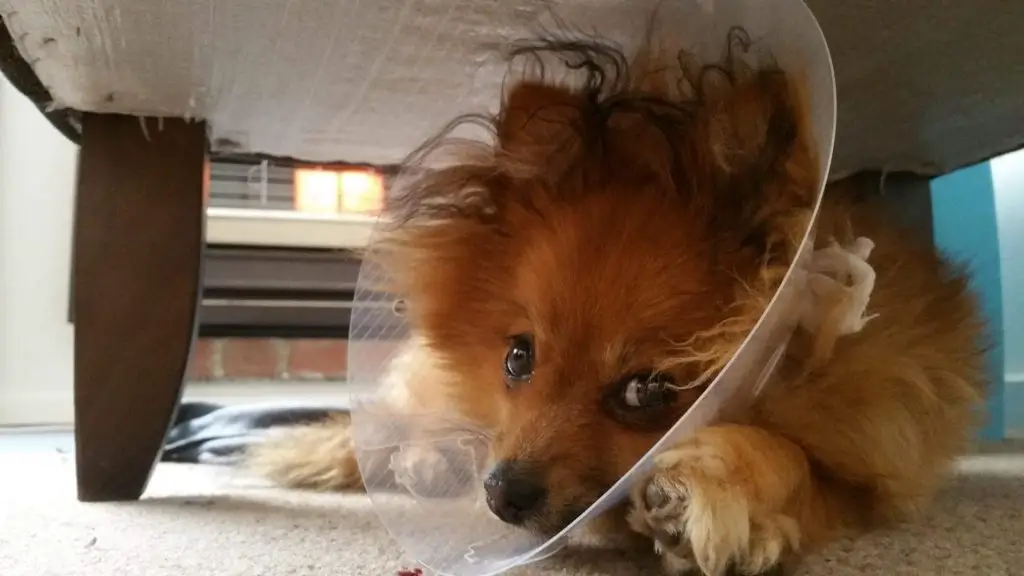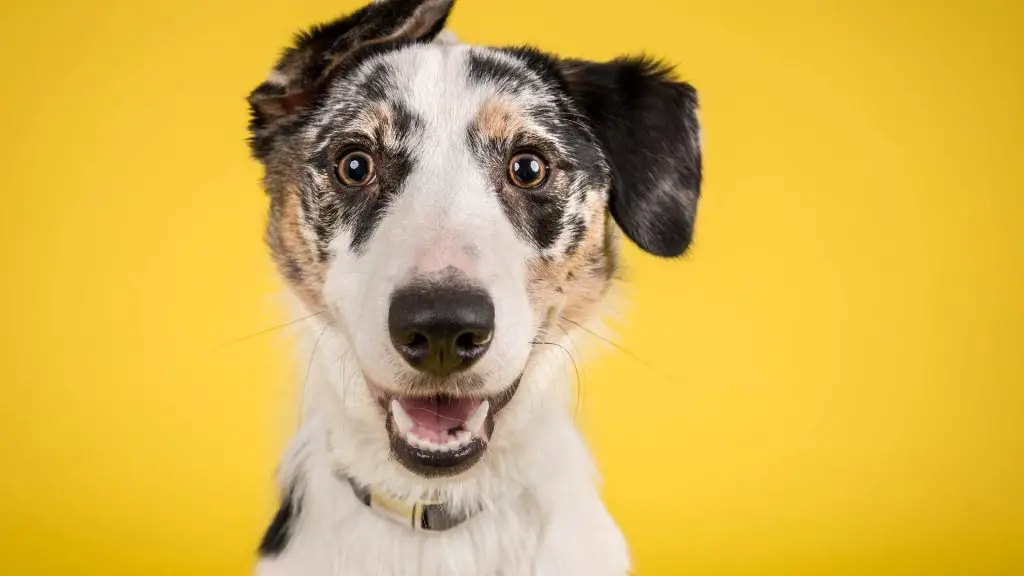Pawscessories is reader-supported. When you buy via links on our site, we may earn an affiliate commission at no cost to you.
Learn more.
So your dog has just been neutered, and you’re wondering when you can take the cone off? Well, wonder no more! In this post, we’ll be discussing when is the best time to remove that pesky cone and let your pooch roam free again. So keep reading for a simple explanation of when it’s safe to take the cone off after neutering surgery.
Table of Contents

How Long Vets Recommend a Cone Stay On After Being Neutered
The first thing you should know is that the amount of time your vet recommends the cone stay on will vary. Some vets may say removing the cone after just a week is safe, while others may recommend leaving it on for up to two weeks or longer. It really depends on your individual dog.
Some things your vet will take into consideration are:
- The size of the incision
- How well your dog is healing
- If your dog is licking or scratching at the incision
If your vet recommends leaving the cone on for a longer period of time, it’s important to follow their instructions. Removing the cone too early could cause your dog to reopen the incision, which would be a big setback in the healing process.
Why Do Dogs Need To Wear a Cone After Surgery?

The sole reason that dogs need to wear a cone after surgery is to prevent them from making their wound worse. A cone stops your dog from being able to lick, chew or bite on their stitches.
Licking, chewing, and biting can lead to infection, more pain and could even cause the wound to open back up, extending the time it takes to heal fully. The cone is there to protect your dog’s incision so it can heal properly without any complications.
Tips To Make Wearing The Cone Easier On Your Dog
While the cone is a necessary evil, there are some things you can do to make the experience more bearable for your dog. Here are a few tips:
- Give them lots of attention and affection. Let them know they’re still loved even though they have to wear the cone and that it’s not punishment.
- Make sure they have plenty of toys to keep them occupied. Boredom can make the experience even more difficult for your dog.
- Feed them their meals in small pieces, so they don’t have to try to eat around the cone.
- Give them treats often to reward them for being good.
- If you have the time to supervise them, taking the cone off periodically to let them stretch and move around more comfortably is an option. You just have to ensure they don’t lick or scratch at their incision.
- Carry him when necessary. If your dog is small, you may need to carry him up and down stairs or help him in and out of the car. The cone can easily get caught on things if their head is low to the ground, making getting around a little more difficult.
- Always keep an eye on them. Even if they’re not trying to lick or scratch their incision, it’s important to keep an eye on them in case they start and to ensure the cone isn’t restricting their airflow.
By following these tips, you can help make the experience of wearing a cone after neutering surgery a little easier on your dog.

Best Ways To Help The Healing Process Be As Quick As Possible
While the cone is essential to helping your dog not tamper with their incision, there are some things you can do to help the healing process along. Here are a few tips to help the healing process be as quick as possible:
- Feed a light meal after the surgery and ensure the anesthesia has worn off. Things like chicken broth and canned pumpkin are good options as they’re easy on their stomach.
- Keep physical activity to a minimum for the first week. This means no running, jumping, or strenuous playing. Instead, make sure your dog takes it easy while their body heals. The less their stitches and wound move, the quicker they will heal and the quicker they can get back to their normal lives.
- Keep him away from water. This means no baths, swimming, or trips to the beach. While most dogs love water, it’s best to keep them dry while their body heals. Water can loosen stitches and potentially cause infection if the water is dirty. If your dog gets dirt around their stitches, you can use a pet-safe wipe to clean around their stitches until it’s close to being fully healed.
- Lots of hydration. This is important for all dogs, but especially those who have just had surgery. Make sure they’re drinking plenty of water to keep their body hydrated.
- Frequently check his stitches. This is important to do even if your dog is wearing a cone. Check for any redness, swelling, or discharge around the incision. If you see any of these things, contact your vet right away, as it could be a sign of infection.
No dog enjoys wearing a big plastic cone, so the more you can do to help them heal as quickly as possible, the better. The sooner their wound heals, the sooner they can get back to their fun-loving self.
Signs Your Dog Is Ready To Have The Cone Removed

If you’ve waited the recommended time (many vets will say 2 weeks) and your pup didn’t have any complications, they should be showing signs that they’re healthy enough for the cone to come off.
Here are a few signs that your dog is ready to have the cone removed:
- They’re no longer licking or scratching at their incision.
- The incision is healing well with no redness, swelling, or discharge.
- They’re eating and drinking normally.
- They’ve been able to have short periods of exercise without any issues.
If your dog isn’t showing these signs, for example, their incision is red and swollen, the cone should still be worn. It’s also a good idea to take them to the vet to have them looked at in case something needs to be done to better help them heal.
More Comfortable Dog Cone Alternatives
If your dog is having a hard time adjusting to the cone, there are a few dog cone alternatives you can try.
First, you can try an inflatable collar. These are similar to what people wear on flights. It gives your dog a little more mobility and vision while still preventing them from being able to lick their private areas. It also acts like a mini pillow that they carry around to help them get a little more comfortable while keeping them away from their stitches.
Second, there are recovery suits. These completely cover a dog’s back and torso. There’s no head attachment, but it covers their body thoroughly, making them unable to lick or nibble on their stitches. Since your pup will still have full range of motion wearing one of these, you’ll have to watch them and make sure they don’t spend too much time licking the surface above their incision.
Third, you can try a soft cone. These are made from softer materials and may be more comfortable for your dog. They don’t have the same level of protection as a traditional cone, but they may be more comfortable for your pup to wear.
If you’re still not sure what the best alternative is for your dog, talk to your vet. They’ll be able to help you find the best solution for your pup.
Final Thoughts
No dog likes wearing a cone, but it’s important to make sure they wear one if their vet has recommended it. By following the tips in this post, you can help make the experience a little easier for your dog. You can also try dog cone alternatives if your dog is having a hard time adjusting to the cone.
Other posts you might find interesting:
Can A Dog Wear A Cone In Their Crate? – Fully Explained!
Ingrown Dog Whisker: Causes, Treatment, & Prevention (Vet Answers)
7 Best Dog Cone Alternatives That Actually Work (Vet Reviewed)
